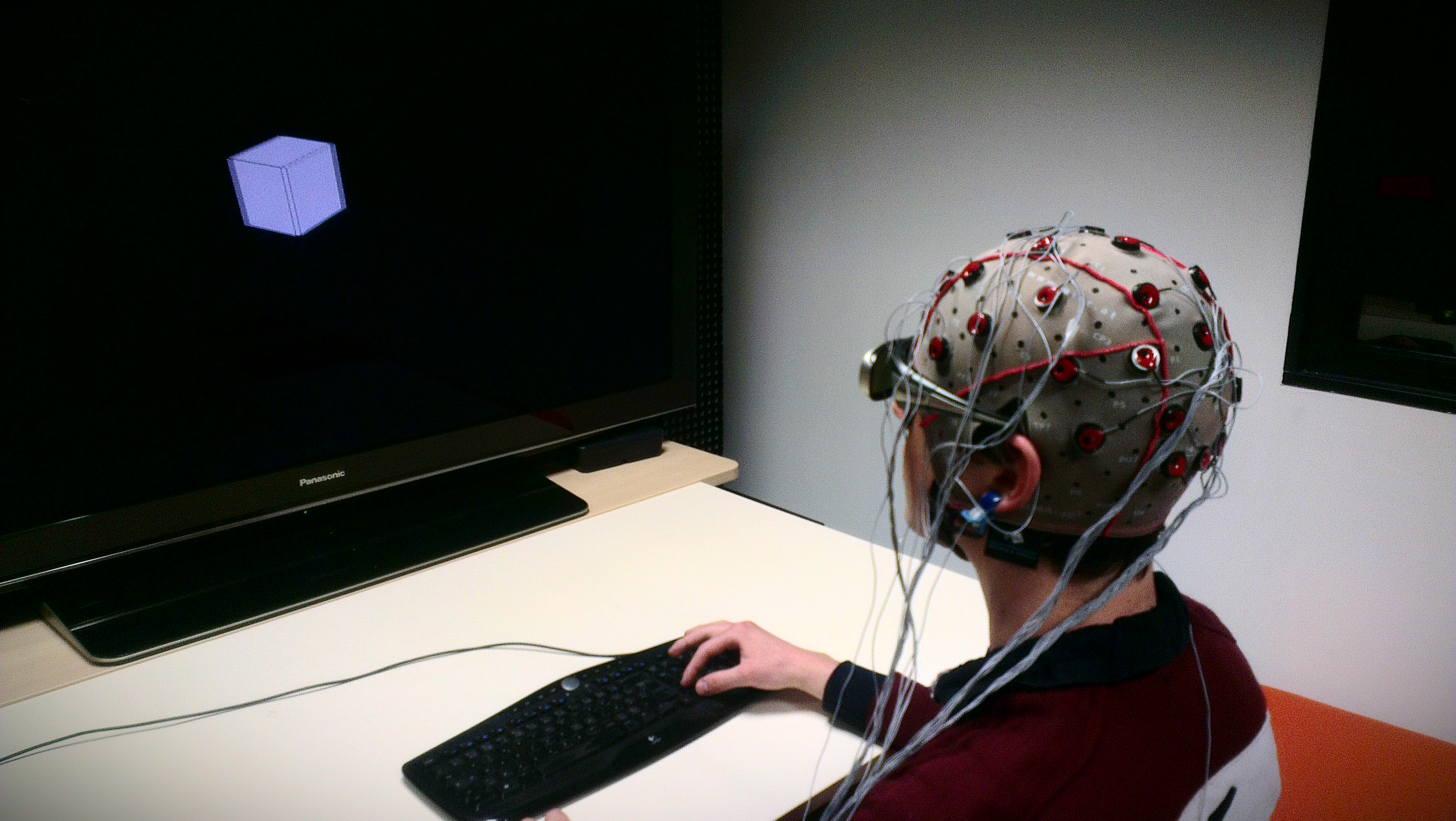Section: New Results
Exploring electroencephalography as an evaluation method for human-computer interaction
Participants : Jérémy Frey, Léonard Pommereau, Fabien Lotte, Christian Mühl, Martin Hachet.
Evaluating human-computer interaction is essential as a broadening population uses machines, sometimes in sensitive contexts. However, traditional evaluation methods may fail to combine real-time measures, an objective approach and data contextualization. We presented a review seeking how neuroimaging techniques can respond to such needs. We focused on electroencephalography (EEG), as it could be handled effectively during a dedicated evaluation phase. We identified workload, attention, vigilance, fatigue, error recognition, emotions, engagement, flow and immersion as being recognizable by EEG. We find that workload, attention and emotions assessments would benefit the most from EEG. Moreover, we advocate to study further error recognition through neuroimaging to enhance usability and increase user experience. This review paper was published in the proceeding of the Physiological Computing Systems (PhyCS) conference [12] .
Along this line of research, we also explored whether it was possible to assess the zone of comfort in stereoscopic displays using electroencephalography. Indeed, the conflict between vergence (eye movement) and accommodation (crystalline lens deformation) occurs with every stereoscopic display. It could cause important stress outside the "zone of comfort", when stereoscopic effect is too strong. This conflict has already been studied using questionnaires, during viewing sessions of several minutes. We built an experimental protocol (see Figure 10 ) which compares two different comfort conditions using electroencephalography over short viewing sequences. Analyses showed significant differences both in event-related potentials and in frequency bands power. By extending our protocol it should be possible to study at the same time comfort and depth perception, having a better understanding of stereoscopy.



